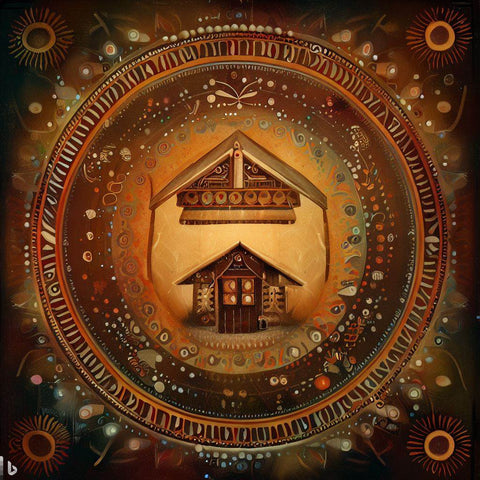Two Year Peruvian Mesa Carrier Work
The Peruvian Mesa Work, integral to the shamanic practices of Peru, especially among the indigenous Q'ero and other Andean communities, is a multifaceted spiritual tool known for its profound cultural and ceremonial significance. The term "mesa" translates from Spanish as "table," but in this context, it refers to a sacred...
$0.00
The Peruvian Mesa Work, integral to the shamanic practices of Peru, especially among the indigenous Q'ero and other Andean communities, is a multifaceted spiritual tool known for its profound cultural and ceremonial significance. The term "mesa" translates from Spanish as "table," but in this context, it refers to a sacred altar or medicine bundle used in healing, divination, and spiritual transformation.
Origins and Cultural Context:
-
The roots of the Peruvian Mesa trace back to pre-Columbian times, woven into the fabric of Andean cosmology where the connection between the physical and spiritual realms is vital. This practice has evolved, integrating aspects of both Andean and coastal traditions, reflecting the rich syncretism of Peruvian shamanism.
Structure and Composition:
-
Mesa Cloth (Mestana): At its core, the mesa is often laid out on a cloth, known as a mestana or mesa cloth. These are typically handwoven with vibrant colors and intricate patterns that hold symbolic meanings. The cloth itself is a canvas of spiritual geography, often depicting the Andean worldview with its unique cosmology of the Upper, Middle, and Lower worlds (Hanaq Pacha, Kay Pacha, and Ukhu Pacha).
-
Artes: The mesa includes various sacred objects, called "artes," each with specific ceremonial or healing purposes:
-
Stones (Kullas or Khuyas): These are often collected from sacred sites and imbued with the energy of those locations, representing different aspects of nature and spirit.
-
Seashells (Conchas): Signify the water element and connection to the feminine, often used to carry prayers or for purification.
-
Feathers (Plumas): Symbolize air, the heavens, and communication with the spirit world.
-
Seeds, Flowers, and Plants: Used for healing, balance, and to connect with the earth (Pachamama).
-
Candles: Represent light, guidance, and the transformation of energy.
-
Personal Objects: Items that carry personal significance, linking the individual's life journey with the spiritual path.
-
-
Arrangement: The layout of the mesa is deliberate, often organized according to the four directions or the five directions, including the center, which symbolizes the integration of all elements. Each direction has associated energies, archetypes, or deities from Andean mythology, like the Apus (mountain spirits) or the elements of water, earth, fire, and air.
Ceremonial Use:
-
Healing: The mesa serves as a diagnostic and therapeutic tool. Shamans use it to identify and treat spiritual, emotional, or physical ailments by interacting with the energies represented by the artes.
-
Divination: Through the mesa, shamans can interpret signs and omens, providing guidance or prophecy. The positioning or interaction of the artes might reveal insights or directions for the client's life path.
-
Rituals and Ceremonies: During ceremonies like the despacho (a prayer bundle), the mesa is central, acting as a focal point for offerings, prayers, and the exchange of energies. It's used in various rites, including the Pachakuti Mesa Tradition, where the focus is on transformation and harmony with nature.
-
Personal Altar: For individuals, the mesa can be a personal altar for daily spiritual practice, meditation, or as a reminder of one's connection to the cosmos and the earth.
Philosophical and Spiritual Significance:
-
The mesa embodies the principle of 'ayni' or reciprocity, where every action in the spiritual realm should balance giving and receiving. It's a reflection of the Andean belief in the interconnectedness of all life, where humans are seen as part of a vast, living network of relationships.
-
It's also a tool for personal transformation, helping practitioners navigate the shamanic journey, confront personal shadows, and integrate wisdom from the spirit world into daily life.
Contemporary Adaptation:
-
While deeply rooted in tradition, the use of the mesa has evolved, being adapted by modern practitioners and spiritual seekers worldwide. It's now part of various healing modalities, workshops, and personal spiritual practices outside Peru, spreading the Andean wisdom while maintaining respect for its origins.
The Peruvian Mesa, therefore, is not just a collection of physical items but a dynamic, living spiritual practice that encapsulates millennia of wisdom, offering a pathway to heal, connect, and understand one's place in the cosmos.




























































































